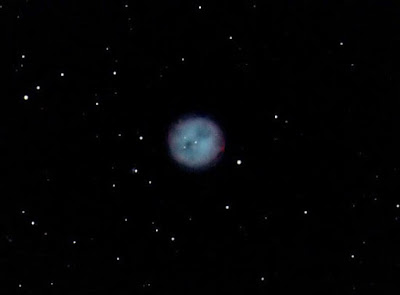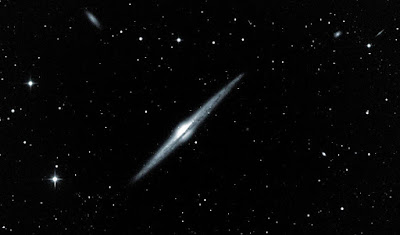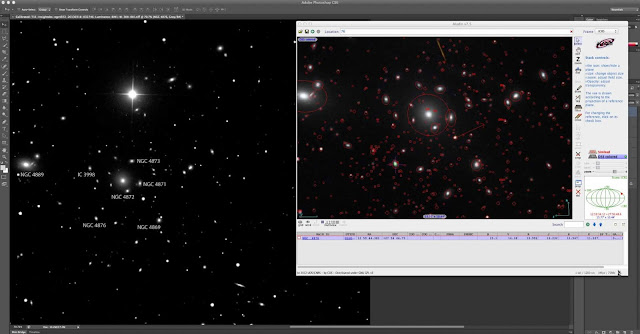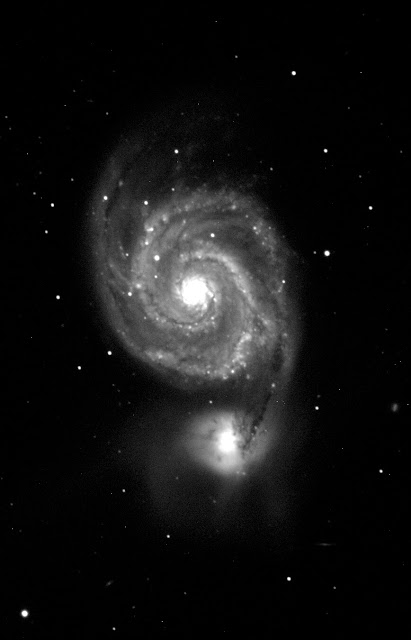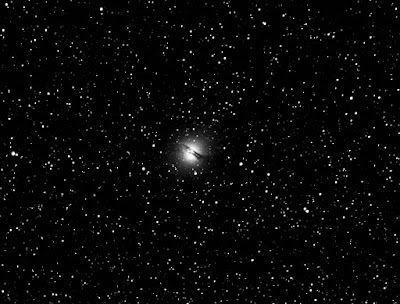According to reports from Space.com and Sky and Telescope magazine, the much-anticipated Comet ISON is now visible to the naked eye according to reports from many observers. Comet ISON - the potential "comet of the century" - has suddenly brightened in an outburst of activity with just two weeks to go before it literally grazes the surface of the sun. In recent months, Comet ISON has repeatedly befuddled forecasters trying to anticipate just how bright it will ultimately become.
But earlier this week, the comet's brightening trend again seemed to sputter and stall, but more recent observations suggest a sudden and radical upsurge in brightness. Comet ISON has brightened suddenly in the last few days to 5th magnitude as of November 15th - a popsicle-shaped comet with a round, sharp-edged, bright green head and a long, thin, dim tail. It's speeding sunward near the bright star Spica in Virgo and Mercury low in the east just before dawn. The comet passes less than 2° from Spica on the mornings of November 17th and 18th for the Americas, accelerating every day toward its November 28th perihelion and trial by fire.
According to veteran comet observer, John Bortle, Comet ISON was shining only at magnitude +8.5 on Monday (Nov. 11) morning - more than six times too dim to be visible to the unaided eye. But by Wednesday morning, the comet’s brightness had increased three-fold brightening to +7.3.
In just 72 hours, Comet ISON increased nearly 16 times in brightness. Carl Hergenrother, acting co-coordinator of the comet section of the Association of Lunar and Planetary Observers, has confirmed Bortle's observations. "ISON has dramatically brightened over the past few days," Hergenrother told SPACE.com via email. "The latest observations put the comet around magnitude 5.7 to 6.1 which is a 2+ magnitude increase from this weekend. My own observations from this morning in 10x50 and 30x125 binoculars show a nice 'lollipop' comet with a very condensed blue-green head and a long narrow tail. The tail was over 1 degree in length even in the 10x50s. The comet may continue to brighten as the outburst is still in its early stages."
Meanwhile, Comet Lovejoy glows only a little less bright much higher before dawn. Both comets are visible in binoculars despite moonlight returning to the morning sky. They're being detected naked-eye by skilled observers under good conditions.
As of Nov. 6, based on a consensus of worldwide observers, Comet Lovejoy had reached magnitude 6.5, which is considered to be the threshold of naked-eye visibility in a dark sky, far from any bright lights.
The new comet is getting progressively brighter with each passing day. This is because while en route to its Dec. 22 rendezvous with the sun, Lovejoy will make its close approach with Earth on Tuesday, when it will pass within 36.9 million miles (59.4 million km) of the planet.
At its best around that time, Comet Lovejoy "might" become as bright as magnitude 4.5, still a moderately faint object, yet bright enough to be glimpsed with the naked eye and certainly a fine object for binoculars and small telescopes. Unfortunately, the moon will be two days past full that morning and well up in the west, lighting up the sky, probably preventing any naked-eye viewing opportunity.
Read More
 |
Comet ISON imaged by Julian Durnwalder on 11-10-2013
using itelescope.net's T21 in Mayhill, New Mexico
|
But earlier this week, the comet's brightening trend again seemed to sputter and stall, but more recent observations suggest a sudden and radical upsurge in brightness. Comet ISON has brightened suddenly in the last few days to 5th magnitude as of November 15th - a popsicle-shaped comet with a round, sharp-edged, bright green head and a long, thin, dim tail. It's speeding sunward near the bright star Spica in Virgo and Mercury low in the east just before dawn. The comet passes less than 2° from Spica on the mornings of November 17th and 18th for the Americas, accelerating every day toward its November 28th perihelion and trial by fire.
According to veteran comet observer, John Bortle, Comet ISON was shining only at magnitude +8.5 on Monday (Nov. 11) morning - more than six times too dim to be visible to the unaided eye. But by Wednesday morning, the comet’s brightness had increased three-fold brightening to +7.3.
In just 72 hours, Comet ISON increased nearly 16 times in brightness. Carl Hergenrother, acting co-coordinator of the comet section of the Association of Lunar and Planetary Observers, has confirmed Bortle's observations. "ISON has dramatically brightened over the past few days," Hergenrother told SPACE.com via email. "The latest observations put the comet around magnitude 5.7 to 6.1 which is a 2+ magnitude increase from this weekend. My own observations from this morning in 10x50 and 30x125 binoculars show a nice 'lollipop' comet with a very condensed blue-green head and a long narrow tail. The tail was over 1 degree in length even in the 10x50s. The comet may continue to brighten as the outburst is still in its early stages."
Meanwhile, Comet Lovejoy glows only a little less bright much higher before dawn. Both comets are visible in binoculars despite moonlight returning to the morning sky. They're being detected naked-eye by skilled observers under good conditions.
As of Nov. 6, based on a consensus of worldwide observers, Comet Lovejoy had reached magnitude 6.5, which is considered to be the threshold of naked-eye visibility in a dark sky, far from any bright lights.
The new comet is getting progressively brighter with each passing day. This is because while en route to its Dec. 22 rendezvous with the sun, Lovejoy will make its close approach with Earth on Tuesday, when it will pass within 36.9 million miles (59.4 million km) of the planet.
At its best around that time, Comet Lovejoy "might" become as bright as magnitude 4.5, still a moderately faint object, yet bright enough to be glimpsed with the naked eye and certainly a fine object for binoculars and small telescopes. Unfortunately, the moon will be two days past full that morning and well up in the west, lighting up the sky, probably preventing any naked-eye viewing opportunity.




